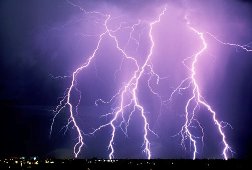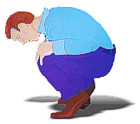 When Thunder Roars, Go Indoors
When Thunder Roars, Go Indoors
By: Stephanie | August 05, 2008 | Category: Health
 Lightning has been called the most underrated weather hazard, killing an average of 62 people and injuring at least 300 people in the United States each year. Did you know that if you can hear thunder, you are within striking distance of lightning?
Lightning has been called the most underrated weather hazard, killing an average of 62 people and injuring at least 300 people in the United States each year. Did you know that if you can hear thunder, you are within striking distance of lightning?
The National Weather Service says that most lightning victims are not struck at the height of a thunderstorm, but before and after the storm has peaked. So seek shelter if you can count 30 seconds or less between a lightning flash and its thunder, and stay in the shelter until 30 minutes after the final clap of thunder.
A large, enclosed building is the best shelter. While you're inside, don't use computers, corded phones, and other electrical equipment (but cell phones and cordless phones—away from their bases—are ok). Also stay away from tubs, sinks, and other plumbing, and metal objects such as refrigerators. (If you are caught in your car, don't touch metal.)
If you're caught outside, try to get to a low place such as a ravine under a thick growth of small trees. Don't stand under a tall, isolated tree or in an open area, and don't lie flat on the ground. Also, don't touch anything metal, including bicycles or golf carts. For boating lightning safety, see the Centers for Disease Control and Prevention's information.

If you feel your hair stand on end, this means that lightning is about to strike. Get into the "Lightning Crouch": drop to your knees, roll forward onto the balls of your feet, place your hands on your knees, and tuck your head down. (Rubber-soled shoes don't protect against lightning.)
If a person is struck by lightning, it is not dangerous to touch him or her. With immediate medical help, including CPR if necessary, most victims survive a lightning strike.
For more information on lightning safety, visit USA.gov's FAQ and the Online School for Weather. Or read lightning survivor stories, see dramatic photos of lightning, or learn more about the science behind lightning.
![]()
Permalink
| View Comments [7]
| ![]() E-mail This Entry
| Tags:
danger
lightning
safety
shelter
stephanie
survive
thunderstorm
victim
E-mail This Entry
| Tags:
danger
lightning
safety
shelter
stephanie
survive
thunderstorm
victim
